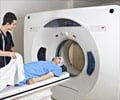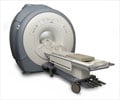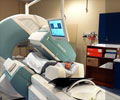A novel Artificial Intelligence (AI) can reduce the delay that occurs during abnormal chest X-ray diagnosis. It reduces delay from 11 days to less than 3 days.
A newly developed Artificial Intelligence (AI) system can drastically reduce the time needed to perform abnormal chest X-rays and help patients receive opinions from radiologists sooner. The AI system reduces a delay of 11 days to less than three days. Routine X-rays of chest area are performed to diagnose and monitor any conditions affecting the lungs, heart, bones and soft tissues.//
Researchers from WMG at the University of Warwick, working with Guy's and St Thomas' NHS Hospitals, extracted a dataset of half million anonymised adult chest radiographs (X-rays) and developed an AI system for computer vision that can recognize radiological abnormalities in the X-rays in real-time and suggest how quickly these exams should be reported by a radiologist. In the process of building the AI system, the team developed and validated a Natural Language Processing (NLP) algorithm that can read a radiological report, understand the findings mentioned by the reporting radiologist, and automatically infer the priority level of the exam. By applying this algorithm to the historical exams, the team generated a large volume of training exams that allowed the AI system to understand which visual patterns in X-rays were predictive of their urgency level.
TOP INSIGHT
The computer vision algorithm technology could reduce a lot of delays occurring in diagnostic imaging procedures such as X-rays, MRI, and CT scans.
The research team, led by Professor Giovanni Montana, Chair in Data Science in WMG at the University of Warwick, found that normal chest radiographs were detected with a positive predicted value of 73% and a negative predicted value of 99%, and at a speed that meant that abnormal radiographs with critical findings could be prioritized to receive an expert radiologist opinion much sooner than the usual practice.
The results of the research are published today, 22nd January 2019 in the leading journal
Radiology in a paper entitled "Automated triaging and prioritization of adult chest radiographs using deep artificial neural networks."
WMG's Professor Giovanni Montana said:
"Artificial intelligence led reporting of imaging could be a valuable tool to improve department workflow and workforce efficiency. The increasing clinical demands on radiology departments worldwide has challenged current service delivery models, particularly in publicly-funded healthcare systems. It is no longer feasible for many Radiology departments with their current staffing level to report all acquired plain radiographs in a timely manner, leading to large backlogs of unreported studies. In the United Kingdom, it is estimated that at any time there are over 300,000 radiographs waiting over 30 days for reporting. The results of this research shows that alternative models of care, such as computer vision algorithms, could be used to greatly reduce delays in the process of identifying and acting on abnormal X-rays - particularly for chest radiographs which account for 40% of all diagnostic imaging performed worldwide. The application of these technologies also extends to many other imaging modalities including MRI and CT."
Source-Eurekalert

 MEDINDIA
MEDINDIA




 Email
Email









